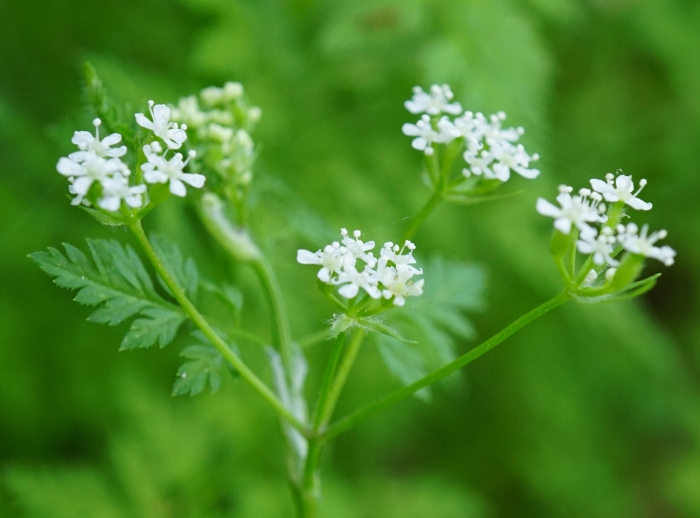Garden Chervil
(Anthriscus cerefolium)
Garden Chervil (Anthriscus cerefolium)
/
/

Patrick Hacker
CC BY 4.0


















































Estimated Native Range
Summary
Garden Chervil is valued for its delicate, anise-flavored leaves, which are used fresh in salads, soups, and as a garnish. It is often grown in herb gardens and as a companion plant in vegetable gardens to enhance the growth of other plants. Chervil prefers a cool and moist environment and tends to bolt in hot conditions. It is best grown as a cool-season crop, similar to lettuce, and should be planted in early spring and late fall or in a winter greenhouse. Regular harvesting of leaves can help prevent bolting. If bolting occurs, gardeners can re-sow chervil periodically throughout the growing season to maintain a continuous supply. While it thrives in full sun, chervil can also tolerate partial shade, which may help prevent premature bolting. It requires medium amounts of water and can adapt to a range of soil drainage conditions, from slow to fast. Gardeners should be aware that slugs are attracted to chervil, and it may be used as a trap crop for them.CC BY-SA 4.0
Plant Description
- Plant Type: Herb
- Height: 1-3 feet
- Width: 1-1.5 feet
- Growth Rate: Moderate
- Flower Color: White
- Flowering Season: Spring, Summer
- Leaf Retention:
Growth Requirements
- Sun: Full Sun
- Water: Medium
- Drainage: Slow, Medium, Fast
Common Uses
Bee Garden, Bird Garden, Butterfly Garden, Edible*Disclaimer: Easyscape's listed plant edibility is for informational use. Always verify the safety and proper identification of any plant before consumption., Fragrant, Low Maintenance, Potted Plant
Natural Habitat
native to Europe and the Caucasus region, now widely naturalized in North America and other parts of the world
Other Names
Common Names: Common Chervil, Have-Kørvel, Garten-Kerbel, Maustekirveli, Cerfeuil, Cerfeuil Cultivé, Hagekjørvel, Echte Kervel, Körvel, Trädgårdskörvel
Scientific Names: , Anthriscus cerefolium, Anthriscus trichosperma, Anthriscus cerefolium var. longirostris, Anthriscus longirostris, Cerefolium sativum, Scandix cerefolium, Chaerophyllum sativum, Chaerophyllum cerefolium, Cerefolium cerefolium
GBIF Accepted Name: Anthriscus cerefolium (L.) Hoffm.